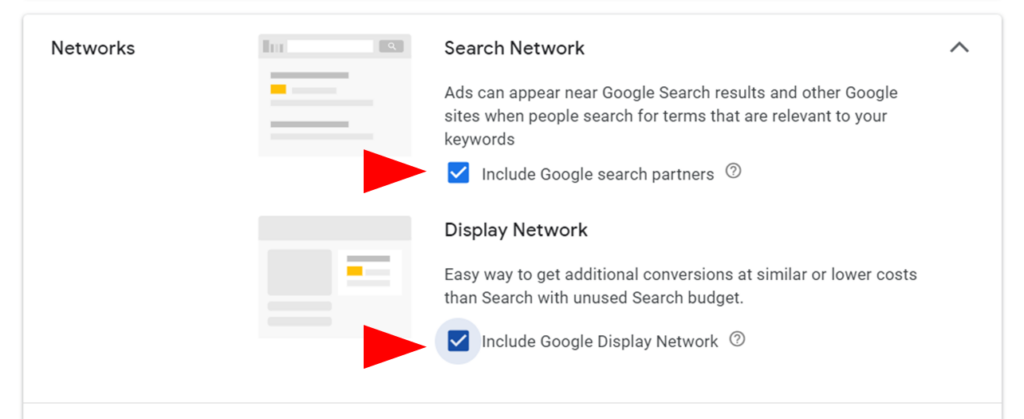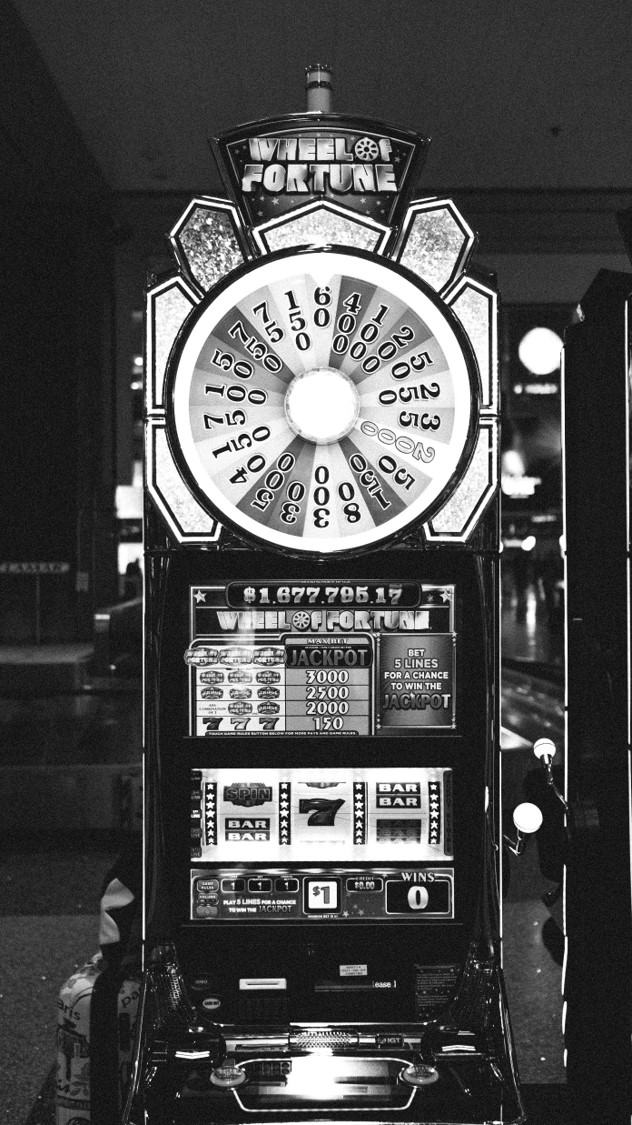Get smart about how Google and Facebook ad platforms are designed so you can tilt the odds back in your favor.
______________________________________________________________________
A Brief Glossary of Terms that really matter to help you make sense of it all:
PPC – Pay per Click is advertising which run in Google SEARCH ad platform where you identify a keyword and bid to get your ads placed on these Searches. The higher the bid, the more likely your ad will appear.
CPC – This stands for Cost per Click and it is how these platforms charge. That sounds like a great deal on the surface because you only pay for performance but beware – not all clicks are created equal.
CPM – Cost per Thousand. This is another way to buy digital advertising (versus CPC) and it means you can buy 1,000 impressions at a certain price. Unlike CPC, you pay for every 1,000 “impressions” you buy and it is detached from any action the user may take. This comes with a few gotchas. First, don’t assume an “impression” is a person as a lot of impressions are not real. Some industry estimates put the fraud rate at between 20 – 50% but no one knows for sure. Second, the “quality” of these impressions, even if they are real, can be low-quality if the ad is on a low-quality content page or utterly irrelevant to what you are selling. One thing is for sure. Anything that is sold in batches of 1,000 can’t be high quality.
CPA – This comes in two main “flavors:”
CPA Flavor #1 – Cost Per Action. This is reflective of a range of outcomes options including Cost per Download (CPD) and Cost per Install (CPI). The important aspect of these CPA metrics is that quality counts. You may be able find platforms that promise cheap download costs but if these users churn away quickly (i.e. they leave or never use your app), then you have accomplished very little. The big challenge is that many of those actions come from unqualified audiences or worse, are faked by publishers to increase their revenue while emptying your pocket.
CPA Flavor #2 – Cost per Acquisition. This is probably the most important metric that often flies below the radar amidst all the other metrics but is critical because it is a measure of how much it costs to get a customer. If you spend $1,000 and you get 10 conversions that makes your CPA $100. That could wonderful or a disaster all depending on what you are selling.
CTR – Click-Through Rate. This is a useful number to know as it helps you understand whether your ad is interesting enough to generate any “engagement,” – a.k.a – a click. That said, too often CTR gets too much attention versus other metrics like Bounce Rate or Time Spent on Site because sometimes the best ads can still get a low CTR. This can happen because the audience is badly targeted or the addressable universe is just too small.
“Scale” – This means the ability to reach a lot of people efficiently, effectively and with little manual intervention. Sounds good – but look under the hood and you realize that “scale” usually means that your ad runs on many outlets – most of which of which are wholly untargeted or unacceptable. They may be the wrong audience or the wrong GEO – all this despite your attempts to make the ads target the right audience at the right time. “Scale” is often badly suited for many a small business.
Retargeting – The theory of this makes sense – present ads to people who have been to your site at least once – but it is highly dependent on how many visitors your site has. Setting up retargeting campaigns be can be fussy and can’t be activated until you hit at least 5,000 recent site visitors. This then is a tactic usually suited for sites with 25,000+ visitors per month thus excluding many small businesses.
______________________________________________________________________
How the ad platforms take advantage of small business.
When Internet first emerged, there was an idealized notion that the Internet “democratized” access to tech so that any small business could compete with big companies. Expensive telephone systems and customer support platforms were now available on “The Web” for a relatively low monthly fee. Advertising too was part of this great tech disruption so that “smarts,” it was thought, was all that was needed to succeed.
This, it turned out, was bunk. “Big” companies have the budgets to hire experts with ad budgets that dominate in their spaces.
Despite this inconvenient truth, ad platforms continue to perpetuate the “David can fight the digital Goliath” myth because their revenue relies on the inexperience of small business to bilk them out of billions of dollars.
For example, according to Deutsche Bank, small business accounts for nearly 75% of Facebook’s $90 billion annual ad revenue. No wonder Facebook will do anything (and I mean anything) to keep small business spending on Facebook.
If the “Davids” have a shot to beat the “Goliaths,” we have to “out” the most egregious practices of the largest digital ad players, Google and Facebook, so we can develop new strategies to take back the advantage.
Google Pay per Click (SEARCH) Ad platform.
There is no doubt that Google’s Pay per Click ad platform also known as Google Search ad platform, which launched in 1998, made digital advertising accessible to just about anyone with a credit card. Spending could be controlled by the advertiser and it was relatively easy to get started. This platform proved so successful for Google that it quickly became the bedrock of its revenue and is a dominant footprint in all things digital.
That said, there is a dark side to the platform as it deploys a clever combination of social engineering, platform defaults and a façade of simplicity to obscure the real complexity so small business continue to spend despite a lack of sales.
PPC can work but don’t underestimate how the platform is engineered to game you.
1) “It’s not us – it’s you”
If PPC performance isn’t up to expectations, there is an implicit and clever bit of social engineering baked in to make it feel like you are doing it wrong. They do this many ways but let’s look at their well-touted “optimization score” as one example of their mind games. Here’s how this works.
Once you set up a campaign, Google has an “Optimization” function that looks like it is helping you improve the effectiveness of campaigns. This tool, scores your campaign from 0 – 100 with 100 being completely “optimized.” Naturally, people want to optimize their score, so they implement the fixes Google suggests. One such fix always involves using the keywords they suggest to you. You think, “Great – that makes my life easier” and you happily click to add all those keywords to your campaign.
This is the “gotcha” moment. The keywords Google shows you are the keywords everyone else in your category is bidding on too. Therefore, you and ALL your competitors are bidding on the same pool of keywords. Price per Click goes up but, surprise no surprise, your results do not.
This is just one example. Here is another one. For instance, if you do achieve some early success, you are tempted to add to your budget thinking your results will go up proportionately. In all my years of experience, I have never seen this work out that way. You may get some more business but it won’t be in sync with your increased spending.
Google deliberately leaves users with a sense that if results don’t live up to expectation, it is because the advertiser is doing it wrong and not Google’s fault. Remember, the truth is that it’s not you – it’s them.
2) “We are simple to use”
On the surface, the platform looks easy but it really isn’t with all the options and variations built-in. It feels easy to start but the options, from the very beginning, come fast and furious that makes it too easy to make costly mistakes. For instance, right when you start to build a campaign, you are presented a confusing and overlapping set of options.

How are “sales” campaigns different from “lead” campaigns? What sane person can distinguish one from the other? While nothing is explained, do not underestimate the profound difference these options have in how Google spends your money.
The complications just build from there; ad extensions or geo targeting (explained below) or their ad performance analytics. Make no mistake about it. Google words these options to sound easy to understand but they are designed to get you to blame yourself – not Google – if you are not achieving the results you want.
3) “Our defaults selections are designed to help you get better results.”
Let’s be very clear and unequivocal about this point. Google sets its default to optimize Google’s profit – not yours. Assume every default that is presented to you is suspect unless proven otherwise.
I recognize how frustrating that is but it is how it is. Let’ use GEO targeting to explain this point. You think you are targeting U.S. but that option has some sub options beneath that make a huge difference. Unless you choose correctly your ad will show up in India and you have wasted a ton of money.
In this example, the default is U.S. so that looks good BUT read it closely – the option with the words “Presence or Interest” is by default turned on. This means Google targets people who may have been in your target area at one point and expressed interest in your product but they may not be in your target geo NOW. This deliberately misleading wording explains how a U.S. geo targeting can, “legitimately,” end up in India.

Another and possibly most infuriating default is around the end date of the campaign. Unless you specifically put one in – that campaign will run continuously possibly costing thousands of dollars you did not intend to spend.

These subtle, default choices have one goal – for you to spend more money with Google.
Google Search and Display Networks
About five years ago, Google combined its PPC (a.k.a. Search) ad platform with its Display ad platform under Google Ads. The Google Display is where you run banner ads in Google’s ad network. This gets a special shoutout because of how Google deviously tucks their display network into the PPC campaign builder to make it look like they simplifying User experience.
The truth is anything but…
As you will see below, the default mode to any PPC campaign created is to include the Search Network and display ad network too. Together, you can kiss about 10% of your budget goodbye.
The Google Search Network includes any site that uses the Google Search widget on the site. Often, this include nefarious sites or porn sites. Your ad will show up on these pages with huge brand safety issues because you have zero transparency of where your search ads are landing.
The Google Display Network are third party sites where Google can place your ad. Again with no transparency, your ad about vitamins will end up on inappropriate and/ or irrelevant site.

If you uncheck the display network part of the buy, Google makes you feel like you are you are shooting yourself in the traffic foot with their message messaging below.

Don’t fall for it!
My issue with these of the networks is that they often do not work well for advertisers because the quality of the network is awful, perhaps one of the worst in the business in my opinion.
So why do they do that you ask? Sure, they want you to spend more money but the answer is even subtly devious. Google is incentivized to include it in the overall platform so they can make their overall Cost per Click (CPC) metrics look stellar despite the lack of performance, thus gaming small business into continuing to spend.
Here’s how this works taking the Google Display Network as an example.
A CPC for a keyword in Google SEARCH might be $3 or $4. That is expensive and they know small advertisers won’t continue advertising at that expensive rate. The Google Display is less precise so a CPC could be as low at 24 cents even though the ad placements (inventory) is on very low-quality sites with commensurate low-quality audiences (many of which are fake audiences).
When Google Ads rolls up the CPC for both channels, PPC and Display, the resultant CPC sounds like a very low cost, fooling small business into believing that the dollars spent can be sustained. That social engineering trick is highly effective at deceiving small business to continue spending.
Facebook Ad Platform
In the news recently, we saw Facebook furiously accusing of Apple undermining the ability of small business to target new customers if Apple followed through on their plan to make its users not available for targeting. “Foul,” bellowed Facebook trying to shame guilt Apple by implying that their move was anti-small business. Facebook’s outrage landed with a thud given that it was outrage of self-interest.
Facebook must lure small business into advertising on its platform because small business ad spending is their revenue pillar, delivering 75% of all Facebook revenue.
Facebook cannot afford to lose small business ad dollars so they do everything they can to highlight all their ad options such as their highly promoted micro-targeting option. This is designed to convince advertisers that they are reaching a very specific and well-aimed audiences thus, in theory, reducing ad waste for advertisers.
As I have said too often in this article; Don’t fall for it. Just don’t.
Facebook has been caught time and time again inflating their reach stats or how badly aimed their micro-targeting really is. On occasion, Facebook advertising can work but here’s a data point that may convince you to think twice about Facebook.
In 2017, just five years ago, the CPM to run a Facebook ad was $4.21, meaning you had to spend $4.21 to reach 1,000 impressions, presumably people. Today, the price is $13.87 – a whooping increase of 222%. The real question to ask yourself is whether Facebook’s ad platform became 222% better in just five years. I don’t think so.
It’s fine if you want to devote time to grow your organic footprint but remember that first and foremost Facebook’s interests lie with Facebook – not small business. Over the years, I’ve come to learn that Facebook generates a lot of activity on its platform but they obscure the fact that there is not a lot of conversion traction.
Your game plan to game Google and Facebook to your advantage
Hopefully, we have opened your eyes to the pitfalls of the two main platforms small businesses use. While this sounds like a bummer (ya – I get it), the key is to learn how to gain the upper hand in your spend. Delivering good outcomes is possible but only if you know what to use and what to avoid.
1. Target specific topics – not people.
PPC built Google into a mega platform because topics are closer to intent than demographic targeting. Even you are able to target the precise right person (a huge challenge), it doesn’t mean that person is in the market for what you have to sell.
Instead, focus on topic-based platforms like Reddit, Pinterest or LinkedIn. These offer you a way get to people in the right mindset to convert and they have a CPC options too.
2. Recognize automation does not mean automatic.
There is a tendency to “set it and forget it” when it comes to self-serve advertising platforms. In many cases, people start the campaign with high expectations and then don’t monitor them very closely for days or perhaps weeks. This is a huge mistake.
Once you start a campaign it is a good idea to check on your stats every day – both the ad platform you are using and Google Analytics. What you are really looking for in Google Analytics is whether your campaign is driving traffic to your site and once you are assured that the spend is driving traffic efficiently then you can focus your attention on conversion.
3. Be selective.
This pertains to a few dimensions of online advertising.
First, be precise in your keyword selections in Google PPC. If in doubt, stay close to topics around what you sell rather than trying to expand your reach with broader keywords that are likely to just drive costs up – not conversions.
Second, try local magazines and newspapers as alternatives. You may be surprised how far your money will go. You may have to pay on a CPM basis versus CPC but it can begin to help you build relationships with media that cares about your results. There is also a chance to get “sweeteners” if you buy directly from publishers like added reach or even the ability to be included in their newsletter to their subscribers.
Third, think carefully about what you sell online. If your product has a low price, then advertising may never pay back. Instead, choose a product with a higher price or create a “bundle” with a higher price that can justify advertising investment.
4. Reject default options.
It’s of paramount importance to remember that ad platforms are engineered to get advertisers to continue spending and ideally spend more. There are many insidious ways they social engineer advertisers to spend more money with defaults that are built-in that are easy to miss unless you look very carefully. When in doubt – reject these defaults which means you have to uncheck these options. This is the best way to make sure you know how your ad dollars will be spent because too often these defaults really dilute your conversion ability in most cases.
5. Experiment. Experiment. Experiment.
Related to point #2, iteratively experiment including changing creative, changing landing pages or targeting parameters. The most important thing to remember is that as you experiment, only change one variable at a time. For instance, if you change the creative and landing at the same time and you see a positive change, you will have a hard time understanding what affected the change. This methodical process does take time but ultimately it is how you can become smarter about your most important metric, your CPA – cost per acquisition.
This also means trying out new platforms as a potential replacement for Google and/ or Facebook.
One option is a platform called BriefBid that I like a lot. It is a marketplace that allows small business to plan, research and select media that is algorithmically matched to advertisers’ specific buying parameters such as demographics or geography.
The platform is really easy to use (for real) and allows advertisers to directly communicate with publishers. It also streamlines the buying process all the way through to issuing the insertion order. It’s true that this platform does not work like the CPC model and may require investments of $5,000 or $10,000 dollars to get publishers to fight for your business (i.e. add deal sweeteners), but if the campaigns are flighted over months, the cost is eminently manageable.
Best of all, the platform is free for marketers so even smaller advertisers can take advantage of this powerful technology.
6. Don’t blame yourself.
This is the final and most critical point which is when things don’t work well, don’t blame yourself. Every ad platform can deliver but not every product can be productively advertised on every platform. Remain flexible, stay open and be realistic about how big your market is and what advertising can, from a practical perspective, do for your business.
I know all this this sounds like a buzz kill for small business. I also know that small businesses are an easy mark for these big adtech firms because they lack the expertise or the ability to hire experts.
Does this mean that small business should not use these platforms? Each business must decide that for itself but my goal is for small business to think about these ad platforms like they are the “House” in casinos and as everyone knows, the “House” usually wins.
If you decide to take the plunge … be smart and be skeptical so you can see how to game the ad platforms to your benefit.
Good luck.
P.S. If you’ve got follow up questions or want to share your personal experiences, just reach out to me on Twitter – @judyshapiro. Let’s amplify the hive mind for communal benefit.





